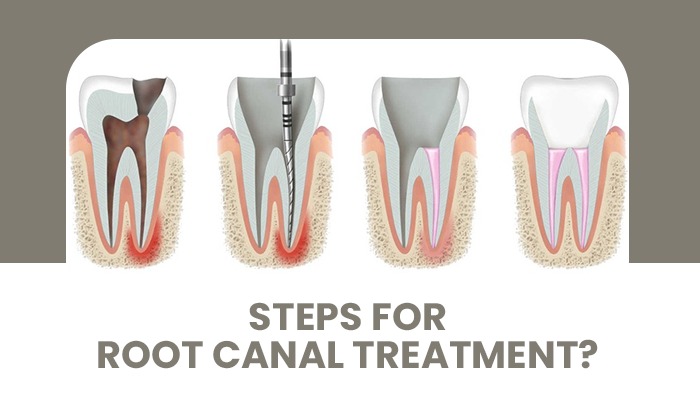Dental Crowns: Everything You Need To Know

What Is A Dental Crown?
A dental crown is a prosthetic restoration that encases a damaged or weakened tooth, restoring its shape, size, strength, and appearance. It is commonly used to protect a tooth that has undergone extensive decay, trauma, or root canal therapy. Dental crowns are custom-made to fit over the entire visible portion of the tooth above the gum line and are typically fabricated from materials such as porcelain, ceramic, metal, or a combination of these materials. Crowns provide long-lasting support and functionality to the tooth, allowing patients to chew and speak comfortably while maintaining a natural-looking smile.
When would you need a dental crown?
Crowns serve several purposes. You may need a dental crown to:
Strengthen a weak tooth.
Protect and support a cracked tooth.
Restore a worn-down or broken tooth.
Hold a dental bridge in place.
Cover a severely stained or discolored tooth.
Cover a root canal-treated tooth.
Cover a dental implant.
Types of Dental Crowns
Dental crowns come in various types, each with its unique characteristics and advantages. Here are some common types of dental crowns:
- Porcelain Crowns: Porcelain crowns are known for their natural appearance and ability to closely mimic the color and translucency of natural teeth. They are an excellent choice for front teeth or highly visible areas due to their aesthetic appeal.
- Ceramic Crowns: Ceramic crowns are similar to porcelain crowns in appearance but are more durable. They are an ideal option for patients who desire both strength and aesthetics.
- Metal Crowns: Metal crowns, such as those made from gold or other alloys, are incredibly strong and resistant to wear. They are often recommended for back teeth where strength and durability are essential. However, their metallic appearance makes them less desirable for visible areas of the mouth.
- Porcelain-Fused-to-Metal (PFM) Crowns: PFM crowns combine the strength of metal with the natural appearance of porcelain. They feature a metal base covered with a layer of tooth-colored porcelain, providing both durability and aesthetics. However, over time, the metal edge may become visible at the gum line, affecting the crown’s appearance.
- Zirconia Crowns: Zirconia crowns are renowned for their strength, durability, and biocompatibility. They offer excellent aesthetics and are resistant to chipping and staining, making them suitable for both front and back teeth.
Benefits of Dental Crowns
- Protection: Dental crowns provide a protective covering for weak, damaged, or decayed teeth, preventing further deterioration and potential tooth loss. They shield vulnerable teeth from fractures, chips, and wear, preserving their structural integrity.
- Restoration of Functionality: Crowns restore the functionality of compromised teeth, allowing patients to chew, bite, and speak with ease. By recreating the natural shape and alignment of teeth, crowns facilitate proper occlusion and ensure comfortable jaw movement.
- Aesthetic Enhancement: Dr. Dabas utilizes dental crowns to enhance the appearance of teeth affected by discoloration, irregular shape, or size discrepancies. Crowns are customized to match the color, texture, and translucency of natural teeth, creating a seamless and harmonious smile.
- Longevity: With proper care and maintenance, dental crowns can last for many years, providing durable and reliable solutions for tooth restoration. Dr. Dabas ensures precise fitting and high-quality materials to maximize the longevity of crowns and minimize the need for replacements.
- Improved Confidence: By restoring damaged or unsightly teeth, dental crowns can significantly boost patients’ confidence and self-esteem. Patients regain the ability to smile, laugh, and socialize without feeling self-conscious about their dental imperfections.
In summary, dental crowns offer multifaceted benefits, including protection, functionality restoration, aesthetic enhancement, longevity, and improved confidence. Dr. Dabas utilizes his expertise and advanced techniques to provide patients with customized crown solutions tailored to their unique dental needs, ensuring optimal oral health and satisfaction.
FAQ
A dental crown is a tooth-shaped cap that restores a decayed, broken, weak or worn-down tooth. Dentists also use crowns to cover dental implants and root canal-treated teeth. Made from a variety of materials, including metal, resin and porcelain, crowns last between five and 15 years with proper care.
A dental crown is a cap or cover that is specially made and fixed to your tooth. Crowns can help your tooth look and function better. You may need 2 visits to your dentist for a dental crown procedure. Once the crown is fixed in place you can eat normally.
Disadvantages of Dental Crowns
Placement over areas of untreated tooth decay. Discomfort due to improper fitting. Increased risk of infection. Increased sensitivity to hot and cold foods and beverages.
One of the reasons for their higher price point is the advanced technology required to produce a crown. Not only does the crown repair your damaged tooth, but it’s also carefully designed to match the shape and colour of your existing tooth – a process which requires the latest CAD technology.
Immediately after crown placement, it’s normal to experience minimal pain, sensitivity, soreness, or swelling around the crowned tooth. The discomfort should fade away in a few days. The dentist will also likely give you medication to manage the symptoms. You can also use cold therapy to manage the symptoms.





